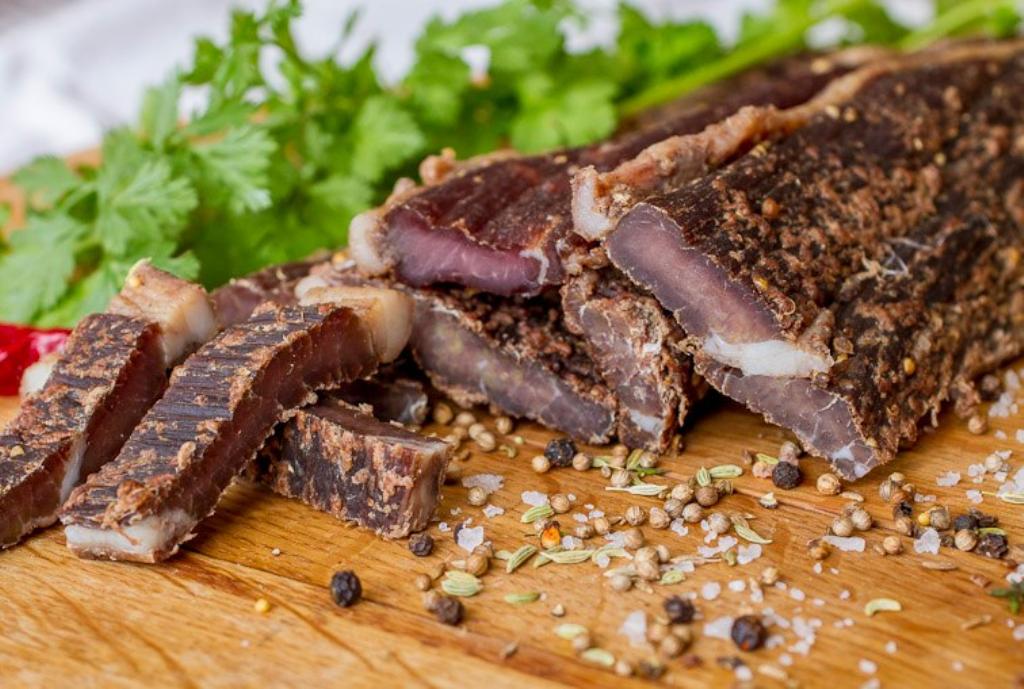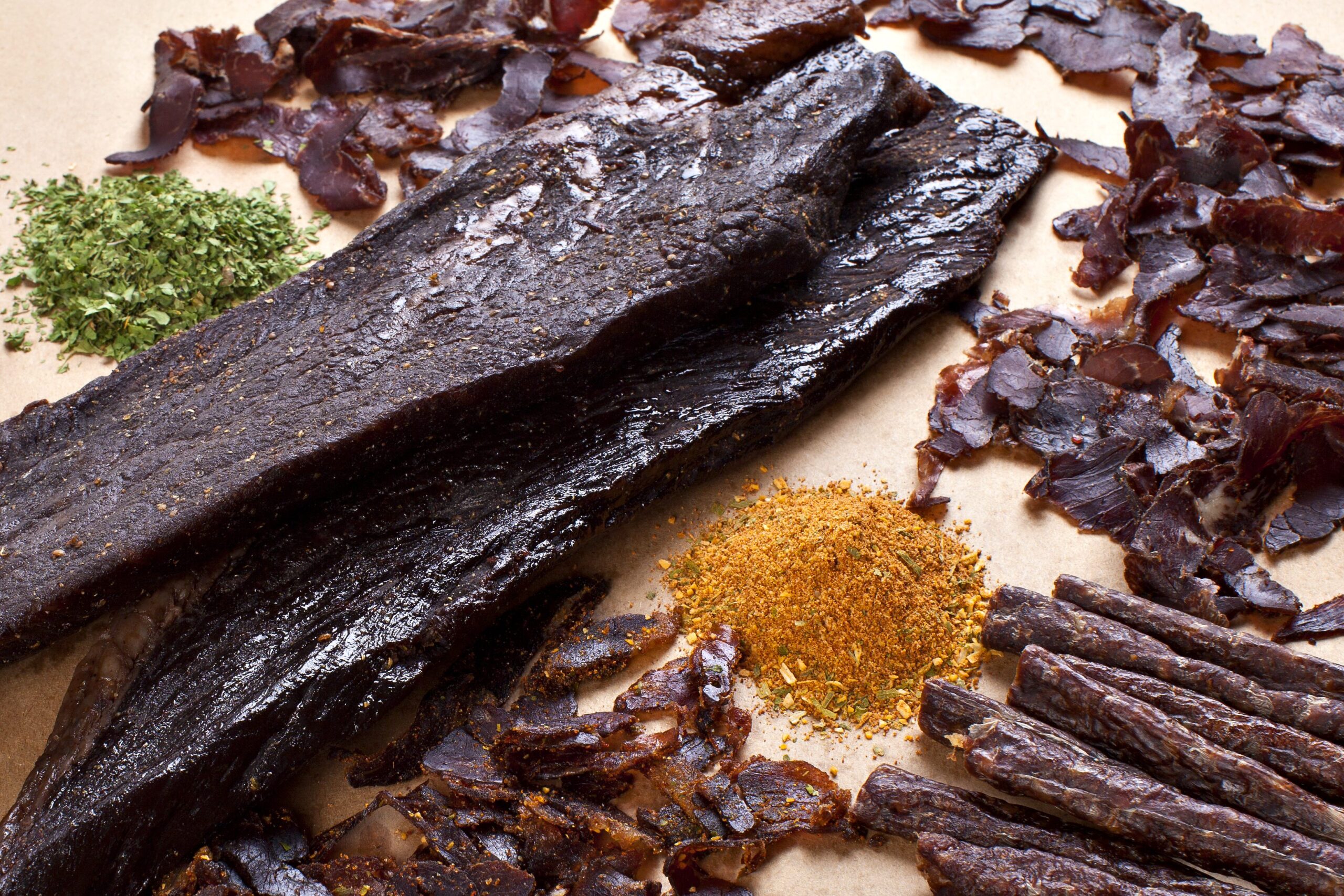In this article, we delve into a savory dilemma that has baffled meat enthusiasts for ages: the battle between biltong and jerky. Are you tired of the confusion surrounding these meaty treats? Wonder no more, as we unravel the key differences between these two beloved delicacies. Prepare to discover the diverse flavors, textures, and preparation methods that set biltong Tauranga and jerky apart.
Whether you’re a dedicated carnivore or simply seeking a new gastronomic adventure, this article promises to satisfy your curiosity and elevate your next snacking experience. So, grab a seat and get ready for a mouth-watering journey through the world of biltong and jerky.
What is Biltong?
Biltong is a delectable, air-dried meat snack that traces its origins back to the majestic plains of South Africa. This culinary marvel is crafted using premium cuts of high-quality beef, which are carefully seasoned with a blend of herbs and spices before being cured to perfection. The name “biltong” itself evokes a sense of adventure, for it stems from the Dutch words “bil” (meaning buttock) and “tong” (meaning strip), highlighting the traditional method of slicing the meat into long, thin strips.
Biltong’s preparation process involves marinating the meat in a delightful combination of vinegar, salt, coriander seeds, and other secret ingredients that lend their unique flavors. The marinated strips are then left to air dry in a well-ventilated area, allowing nature’s gentle breeze to work its magic. The result? A tender yet robust meaty treat that boasts an alluring aroma and an exceptional depth of flavor.
This South African delicacy not only satiates one’s taste buds but also carries with it a rich cultural significance. It serves as a symbol of heritage and resourcefulness, as biltong was initially created as a way to preserve meat for extended periods without refrigeration. Today, biltong has transcended its humble origins to become an internationally beloved snack that embodies tradition and adventurous spirit in every savory bite
What is Jerky?
Jerky, a delectable meaty treat, has been satisfying hungry palates for centuries. Its origins can be traced back to ancient civilizations who sought ways to preserve meat for long journeys or harsh winters. Traditionally made from beef or game meats, jerky beef is prepared by thinly slicing the meat and then marinating it in a blend of spices and seasonings. The marinated strips are then dried using various methods like air-drying or smoking.One cannot help but marvel at the ingenuity behind jerky’s creation. By removing moisture from the meat, it becomes less susceptible to spoilage while retaining its flavor and nutritional value. The result is a portable snack that offers a concentrated burst of protein and energy, perfect for adventurers on the go.
The process of making jerky has evolved over time, with different regions adding their own unique twist. From the smoky sweetness of American-style jerky to the spicy heat of South African biltong, there is an endless array of flavors to explore. Jerky has become not just a survival food but also a beloved snack that brings joy and satisfaction with every bite.
So next time you sink your teeth into a piece of jerky, take a moment to appreciate its rich history and versatility. It is more than just dried meat; it represents innovation, resilience, and the ability to transform humble ingredients into something truly extraordinary.
Origins and Cultural Significance
Origins and Cultural Significance:Immerse yourself in a captivating journey through time as we explore the origins and cultural significance of these delectable meaty treats. Biltong, with its roots deeply embedded in South African history, has been a staple food for centuries. Passed down from generation to generation, the art of biltong-making symbolizes the rich cultural heritage and resourcefulness of the South African people. Its preparation techniques were initially developed as a way to preserve meat in the arid climates of Africa, allowing nomads and travelers to sustain themselves during long journeys.
On the other hand, jerky traces its origins back to ancient civilizations such as the Incas and Native American tribes. These resourceful communities ingeniously devised methods to preserve their meat when hunting was abundant. The cultural significance of jerky lies not only in its practicality but also in its ability to bring people together. In many indigenous cultures, jerky was shared during communal gatherings and served as a symbol of unity and hospitality.

As we delve into the fascinating history behind these culinary delights, let us appreciate how they have transcended time and borders, becoming beloved snacks that have stood the test of time. Embark on this exploration with an open mind and heart, for it is not just about comparing two meaty treats; it is an opportunity to embrace diverse cultures and celebrate their ingenuity in creating gastronomical wonders that bring joy to our taste buds.
Ingredients and Preparation
Ingredients and Preparation:In the realm of Biltong and Jerky, the ingredients and preparation techniques play a vital role in distinguishing these meaty treats. Biltong is traditionally made using high-quality cuts of beef, such as sirloin or topside. The meat is carefully sliced into thin strips, ensuring optimal tenderness. A special blend of spices is then sprinkled generously over the meat, typically consisting of coriander seeds, black pepper, salt, and vinegar. The spice blend not only enhances the flavor but also aids in preserving the meat.
On the other hand, Jerky follows a slightly different path to tantalize our taste buds. It can be crafted from various types of meat like beef, pork, or even exotic game meats like venison or buffalo. The meat is sliced into thin strips as well but undergoes marination before drying. A marinade mixture consisting of soy sauce or Worcestershire sauce along with spices like garlic powder or chili flakes imparts a unique flavor profile to every piece.
These distinct approaches in ingredient selection and preparation methods give rise to diverse taste experiences when indulging in these savory snacks. While biltong tends to have a more robust flavor profile with hints of tanginess from vinegar and earthiness from coriander seeds, jerky embraces a smokier taste due to its marination process that incorporates various spices.
Texture and Consistency
Texture and Consistency:When it comes to texture and consistency, both biltong and jerky offer unique experiences for the palate. Biltong presents itself as a tender, yet slightly dense meat snack. Its slices have a succulent chewiness that is oh-so-satisfying. Imagine sinking your teeth into perfectly marinated beef, gently tearing away bite-sized portions that melt in your mouth like a savory symphony.
On the other hand, jerky boasts a more robust and resilient texture. It is thinly sliced and dried to create a firmness that requires a bit more jaw power to conquer. The fibrous nature of jerky adds an enjoyable element of resilience, allowing you to savor each bite with determination.
Both biltong and jerky offer an indulgent experience for meat enthusiasts, but their differing textures cater to different preferences. Whether you prefer the tender tenderness of biltong or the resilient chew of jerky, these meaty treats never fail to deliver an epicurean adventure worth savoring.
Flavor Profiles:Biltong:
Indulging in the rich, distinctive flavor of biltong is truly a sensorial experience like no other. The combination of carefully selected spices, vinegar, and air-drying creates a robust profile that dances on the taste buds. Imagine a symphony of flavors – a harmonious blend of coriander, black pepper, salt, and sometimes hints of garlic and chili. Each bite reveals layers of complexity that unfold gradually, leaving a delicious lingering aftertaste that begs for another savory morsel. The intensity of the spices is perfectly balanced by the natural sweetness of the meat itself, resulting in an irresistible fusion that speaks to the gourmet connoisseur within us all.
Jerky:
On the other hand, jerky offers its own tantalizing flavor profile that has stood the test of time. Picture yourself immersed in an adventure through its smoky essence. Subtle notes of soy sauce or Worcestershire sauce marry with hints of onion and garlic powder to create an umami explosion on your palate. As you chew on each tender strip, your taste buds are taken on a journey from boldness to tenderness. The flavors are bold yet comforting – they evoke memories of campfires under starry skies and road trips with friends. With every bite, jerky tells tales steeped in tradition and nostalgia.
Comparing Flavor Profiles:
While biltong embraces intricate spiciness with a touch of sweetness, jerky beckons with its robust smokiness accompanied by familiar seasoning blends. Both provide delightful options for those seeking an indulgent experience beyond mundane snacking choices such as potato chips or candy bars
Conclusion
In conclusion, after delving deep into the world of biltong Tauranga and Jerky, it is clear that these meaty treats each possess their own distinct qualities and cultural significance. Biltong, with its roots in South African tradition, offers a delectable combination of tender texture, bold flavors, and artisanal craftsmanship. On the other hand, Jerky brings a rugged charm to the table with its chewy consistency and diverse range of marinades.

